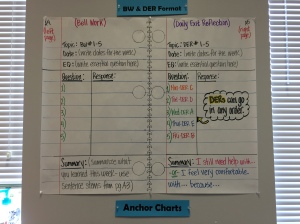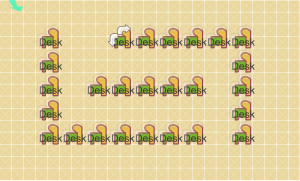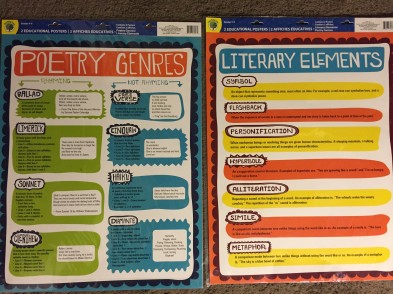Today’s classroom is simply not as functional without the use of technology. In a small adventure through a Tech Trek I have come across some very important things to note on using technology in the classroom. Follow me…
First Stop!
When you think about technology…Are you a native, visitor, or resident? How do you live your tech life?
I think I just recently got my residency in technology. Personally, if it can get it done faster and effectively I am going to use it. I am the gal that spends a large amount of time researching ideas and inspiration from the web. It is one of the reasons I love Pinterest. Pinterest provides an easy way for me to research ideas, look at images for inspirations, get how-to’s, and just learn! I also love blogging, although I don’t tend to keep up with it as well as I should, it is one tool I would definitely use in the classroom, especially for parent and student to teacher communication.
Next, Check Out…
Tech Tools to Enhance Student Learning
- Screen-Cast-O-Matic: Record Screen Shots
- Don’t want to have to sit there and explain the same process of logging into a school or source website for 7 class periods?
This will be your best friend. It is a great tool to create mini-lessons or instructions on how to log-into sites or to model for students how to use a site you’ve provided them with. If you have a class blog, class YouTube channel, or Edmodo, this is a great way to upload these instructions for students to follow at home. But, don’t just limit it for students, you can do the same with parents. This is especially great for those parents that may not be as tech-savvy.
- http://www.screencast-o-matic.com/
- Slideshare: Post Your Presentations
- A student was absent? You need an extended learning opportunity? Want to let parents know what students saw in the classroom?
I would use this to upload all my important class note presentations so students can have access to it if they miss class or didn’t have time to finish the notes in class. I would also use it to provide support with mini lessons. Some these mini-lessons can be based on reviews your student’s need from previous grades (things that you just can’t take time out to cover in class).
- http://www.slideshare.net
- VoiceThread: Respond to Images & Documents
- Students love the opportunity to use technology in the classroom, even if it requires them to do something educational.
I’d love to use this to start an online conversation piece on a art literary representation. Students can discuss their connections or interpretations of the art piece in connection to a text. As the teacher you can always start off the conversation.
- http://voicethread.com/?#q.b409.i848804
- Kahoot!
- Don’t know what to do with those cell phones? Use them as trigger buttons!
Kahoot is one of my favorite tools because it provides a little bit of everything to check for student understanding and engage them. It is a game-like tool to create questions or surveys in order to check for understanding. Students love it because it gives them a reason to use their phone but it is also great for teachers because you can ask questions that include multimedia options (video, recording, images). It also provides a competitive component for those students that thrive on this aspect. But, most importantly, it gives you the data to assess students.
- http://www.getkahoot.com
Travel outside your PLC…or take them with you!
Professional Learning Networks (PLN)
Ask yourself, how do you keep learning about teaching after you leave school? What is your insight about virtual professional learning? What do you notice about virtual professional development?
Ok, so as for me, I think I’ve answered some of these already. My “go-to” application for learning after teaching is Pinterest. I have a designated Pinterest board titled “Pedagogy” and it is where I pin any resources I find for my future use. As mentioned before I love blogs, but not only for my own personal writing but also for professional learning. There are many teachers and professionals in the field that have blogs to inform teachers on the latest trends or just ideas for lessons. What I didn’t think about was the opportunity to use social networking sites as a professional learning tool or as a PLN.
I think virtual professional development is invaluable because not only can you collaborate with teachers in your own school community but it can be extended past your state and even globally. If I have the opportunity to create or join a PLN my choice would definitely be tied to social media. I think it is the quickest tool to get my attention and others. Facebook groups or even Twitter are right there in your phone just one notification and a new idea has emerged.
Students? Of course! Bring them along…
Authentic Tasks for Students
It is important for you as a teacher to incorporate technology in the classroom. But, it is more than just using a word processor for final drafting. Students need authentic purposes for using technology in the academic environment. As I mentioned before, students love any moment they can get their hands on any piece of electronic device. They are excited to partake in and with the things they are most familiar with.
Of course, those are just some of the reasons and benefits of integrating technology with the tasks your students complete. In this digitally driven society, students need to be exposed to multiple ways of communications and practices using the devices they would normally use for leisure. Most students today can easily tell you how to search something on Google, how to check your Facebook, Twitter, or Snapchat, but they wouldn’t be able to show you how to use these tools academically. Teachers have the opportunity to provide different purposes for these sites and introduce new ones that will help students expand their digital literacies. I personally love the idea of using some of these sites as methods of publication for students to feel motivated to complete assignments.
The risk we take as teachers when using technology is losing some of the student’s opportunities to be fully engaged. There is always the possibility of having students in the classroom that do not have access to technology at home. Therefore, it can be hard to use some of these tools to their full potential if students can’t take advantage of them fully by extending the practice and resources.
So, What Lies Ahead?
You’d be surprised how many tools teachers are using out there. It ranges from social media to complex e-learning software. After perusing Jane Hart’s Slideshare Top Tech Tools for Educators 2015 I realized the amount of technology resources available to educators is overwhelming. I know it is impossible to use every single program during our teaching career, especially because the list will grow over the years, but it is always a good idea to be informed and find those resources that work best for you and your practices.
Check out Hart’s List by following the link:
Let’s take it back to integrating these digital literacies and what we should consider…
The Digital Bloom’s Taxonomy
As we plan to integrate any form of program, software, website, or any other digital use, we need to think of the cognitive level being impacted in our students. Remember that as teacher’s everything goes back to helping our students move from basic understanding to the applying and creating process. Think of the Bloom’s Taxonomy levels and when selecting what to use think what cognitive level will the tool assist for students. For example, if you are looking into having students work on evaluating concepts and how they are used in different venues, students can watch videos and use a scoring system to judge what they noted from the video.
Hmm…so, what will I try?
I found it rather interesting that Twitter made it to the number one spot for tech-tools educators use. I honestly would’ve never thought of using Twitter as an educational tool, but now that I see it has multidimensional uses, I am reconsidering. Therefore, I want to incorporate a Twitter account for my classroom. My hopes are that as a class I can involve my students in creating hashtags for different assignments and comments on specific concepts learned. I would also link it to a class blog/website. I love the idea of having a one-stop page where parents and students can be updated as to what is happening in the classroom and I think a class blog/website accomplishes this. The Twitter account would be a collaborative place where students can share thoughts academically but also have access to extended learning opportunities.
.
















